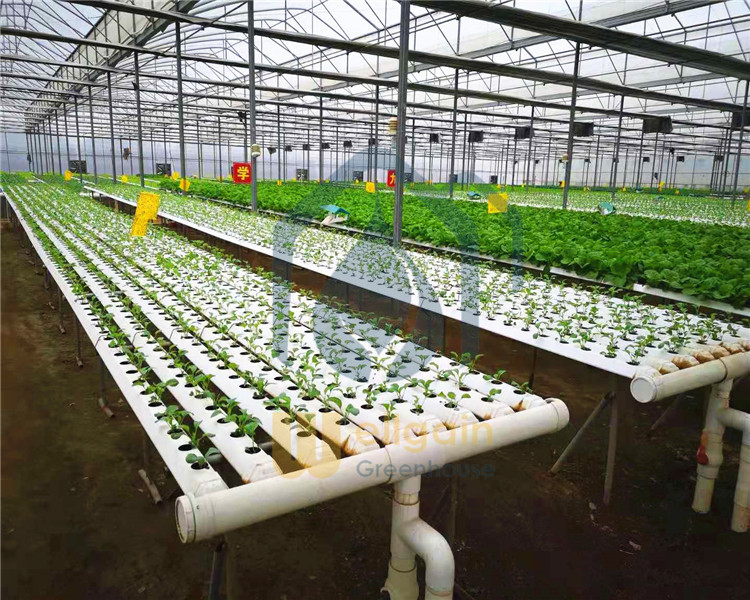Efficient, productive and worry-free green revolution throughout the year
A. Advantages of
Hydroponics in Greenhouses
1. Controlled environment, stable and high yield
The temperature, humidity and light in the greenhouse can be precisely regulated, avoiding the impact of extreme weather conditions. The growth rate of leafy vegetables is over 50% faster than in open-field cultivation.
The
hydroponic system directly supplies nutrients, reducing soil-borne diseases and making the vegetables healthier.
2. High space utilization rate
By adopting vertical cultivation (such as
NFT and DFT systems), the yield per unit area is 3 to 5 times that of traditional soil cultivation.
3. Year-round cultivation without breaks Winter heating and summer shading enable continuous production throughout the year, especially suitable for short-cycle leafy vegetables such as lettuce, spinach, and romaine lettuce.
B. Full Process of Planting Management
1. Seedling Stage
Seed Treatment: Soak seeds in 50℃ warm water for 10 minutes for disinfection, then soak at room temperature for 4-6 hours.
Seedling Blocks: Use rock wool blocks or sponge blocks to maintain humidity. After 3-5 days of germination, transplant to the hydroponic system.
2. Growth Period Management
Light: When natural light is insufficient, supplement with LED red and blue light (14-16 hours per day, light intensity 150-200 μmol/m²/s).
Temperature: 20-25℃ during the day, 15-18℃ at night (in summer, use shading and ventilation for cooling; in winter, heating is required).
Nutrient Solution: Replace once a week to avoid algae growth; regularly test EC value and gradually increase it as the growth period progresses.
3. Harvesting and Rotation
Harvesting standards: Lettuce is harvested when it reaches about 25-30 days (with a single plant weight of over 150g), and water spinach is harvested by pinching off the top when it reaches 15-20 days. Crop rotation suggestion: After each crop is harvested, thoroughly clean the system and alternate the planting of different genera and species of leafy vegetables (such as Brassicaceae → Compositae) to reduce diseases.

